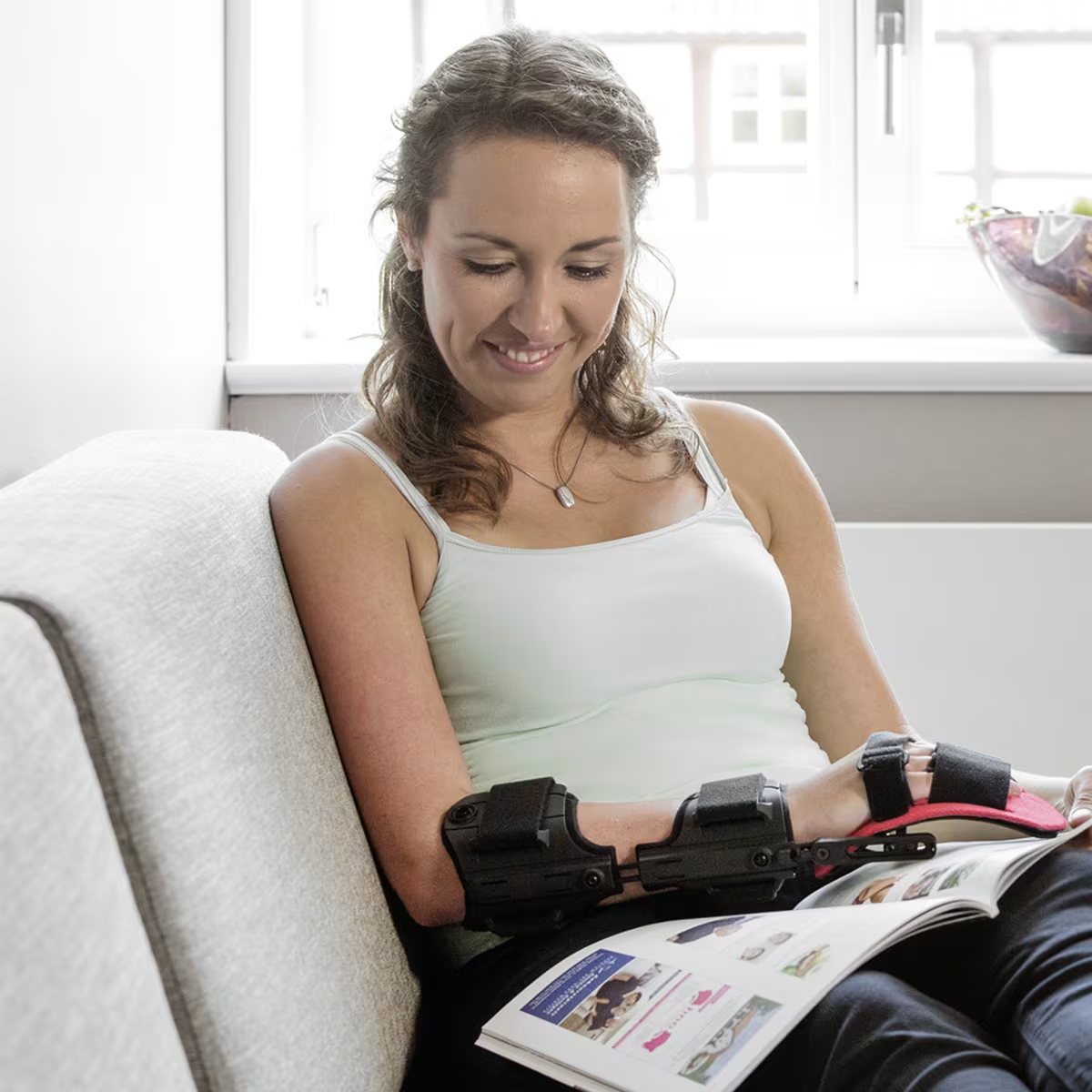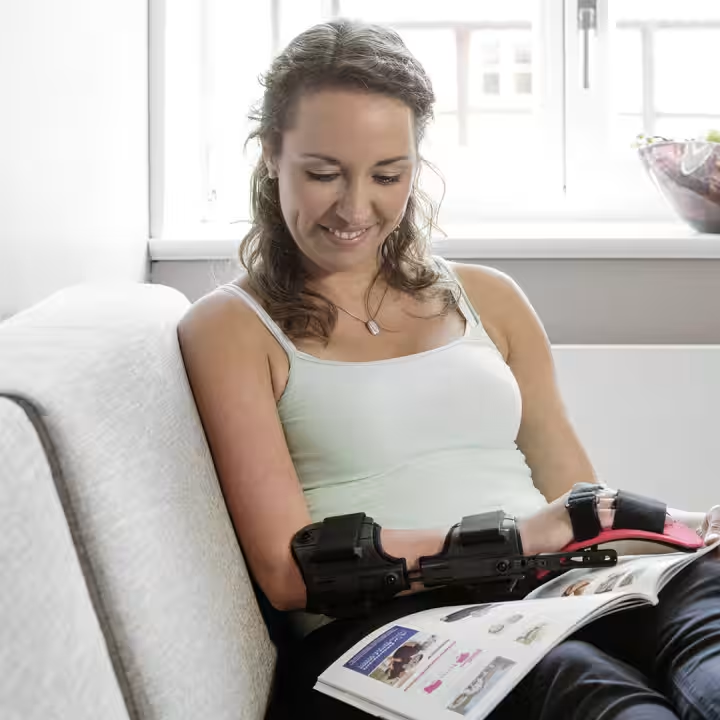


Hand orthotics and hand supports
Wrist supports and hand orthotics offer targeted support, stabilizing your hand and wrist, relieving strain, and supporting recovery after an injury or surgery.
Wrist supports and hand orthotics offer targeted support, stabilizing your hand and wrist, relieving strain, and supporting recovery after an injury or surgery.
Hand orthotics and supports stabilize and support
Orthotics can take the strain off joints or entire regions of the body, right where you need it most. They can also prevent you from making wrong movements. This helps to alleviate pain and ensure therapy is successful. Hand orthotics are specially designed for the hand and wrist area. Depending on the model, they can also be effective for parts of the forearm. If you wear a hand orthotic, you won’t be able to move the affected part as freely as you would with a hand support, wrist support, or finger support. A hand orthotic stabilizes the joint or immobilizes your finger, hand, or wrist.
Depending on the design in question, some hand orthotics can correct the position of your hand or be adjusted to allow a specific range and extent of motion. Some can even set the exact position or range of motion for individual fingers. This prevents users from performing movements that would impair their recovery. In short, a suitable hand orthosis will ensure movements are performed in a safe, controlled manner. Straps, bars, or rods are generally used to stabilize the hand, wrist, and possibly the forearm.
Will a hand orthotic help if I have carpal tunnel syndrome?
A type of hand orthotic also known as a carpal orthotic is frequently prescribed for mild cases of carpal tunnel syndrome. People wear these types of orthotics especially at night because they immobilize the hand and joint and prevent you from bending your wrist too far in your sleep. It can be very painful if the median nerve, which is partially responsible for helping you move and feel your thumb, forefinger, and middle finger, is pinched. Wearing a suitable hand orthotic is a good solution to this problem.

Will a hand orthotic help if I have tenosynovitis?
The connective tissue around a tendon is also called a tendon sheath. Inflammation of the tendon sheath (tenosynovitis) leads to swelling of the tendon and tendon sheath. It is most commonly caused by excessive strain. Due to the inflammation, very little space is left between the tendon and the tendon sheath in this case. As a result, the slightly oily synovial fluid, which serves as the nutrient and lubricant in the tendon sheath, is no longer able to adequately reduce friction. When this occurs, it’s particularly important to immobilize and rest the affected area to relieve pain and counteract loss of function in your hand, wrist or forearm.
Depending on your individual needs, a special, ultra-lightweight hand orthotic for everyday use is the ideal alternative to a cast, support, or athletic taping. In most cases, you will also be prescribed anti-inflammatory medication, cold therapy, or electrotherapy to support your treatment. If you have tenosynovitis, it’s especially important to make sure the affected area is only completely immobilized on a temporary basis, because the tendon and tendon sheath can otherwise stick together.
Back to everyday activities: three steps to an Ottobock orthotic
- Here you’ll find an overview of all the orthotics and supports that could potentially help you. Take the list with you to your next doctor’s appointment.
- Talk to your doctor about which orthotic is best suited to your symptoms and condition. Your doctor can then write you a prescription for the appropriate orthotic.
- Take your prescription to a medical supply company. They’ll give you your new orthotic and adjust it to fit your exact body measurements.





